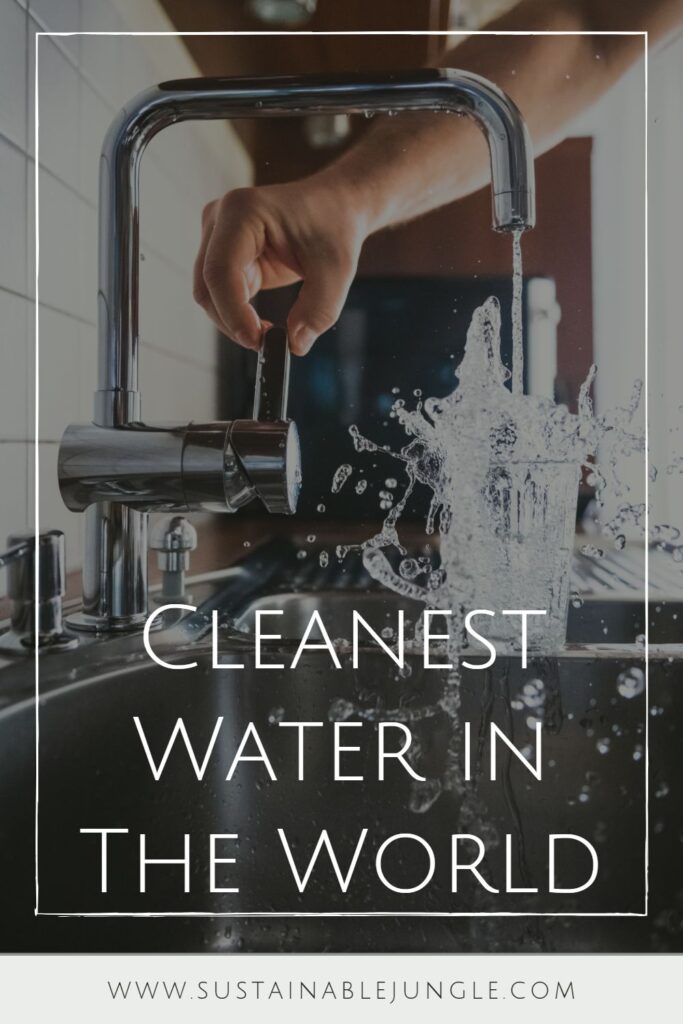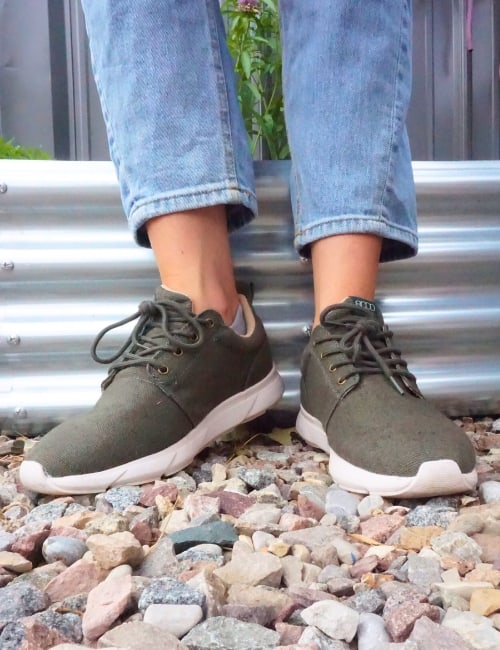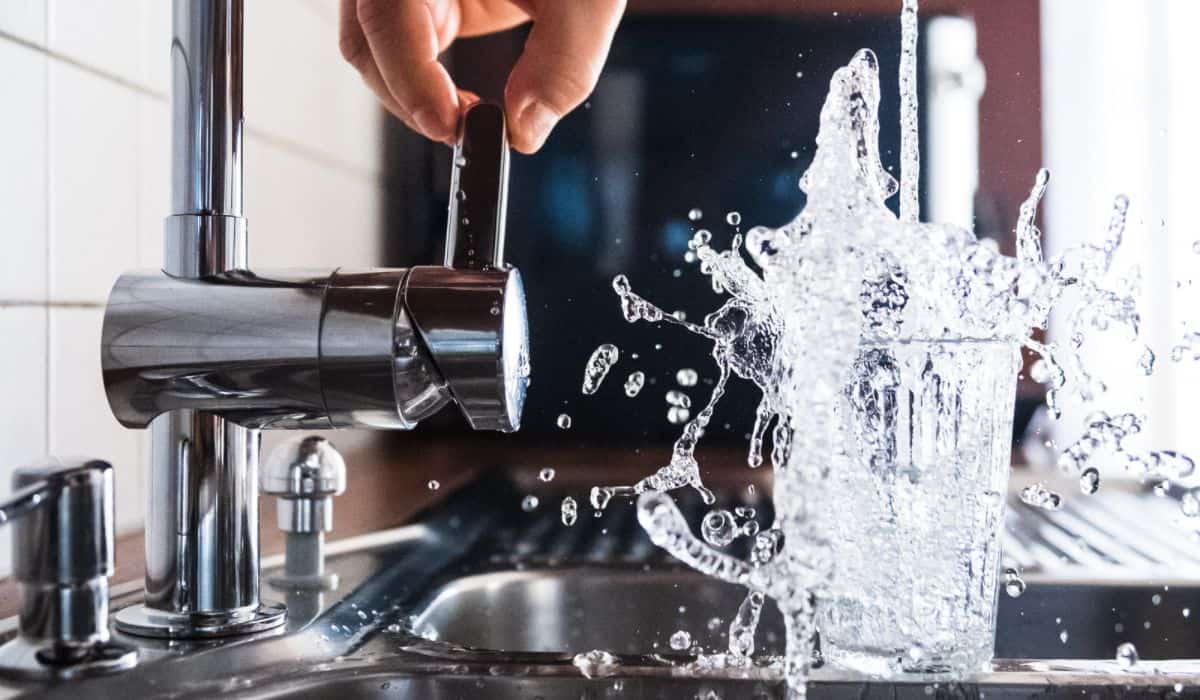
Sip, Sip Hoorah for 13 Countries With The Cleanest Water In The World
You use it every day for (almost) everything, but how clean is your water, really?
And how does it compare to countries with the cleanest water in the world?
Before filtering through the finest aqua, we should acknowledge that many countries still don’t have access to basic water services—let alone water safe enough to drink from the tap.
According to the World Health Organization, around 1 in 4 people lack safe, clean drinking water.
A sad reality.
On the flip side, there are those countries that are blessed with natural resources, dedicated government officials, funds, and infrastructure to provide their citizens with pure H2O.
So what country has the cleanest water in the world?
With conditions constantly changing and different ways to measure “clean,” it’s impossible to pick a single winner.
This list of countries with the best water in the world is based on resources like Yale’s Environmental Performance Index, as well as other reports that have looked into where and how a country’s water is sourced.
Pour yourself a glass and let’s take a look at the top 13 places for pure, delicious water.
QUICK LINKS FOR THE COUNTRIES WITH THE BEST WATER IN THE WORLD
1. FINLAND
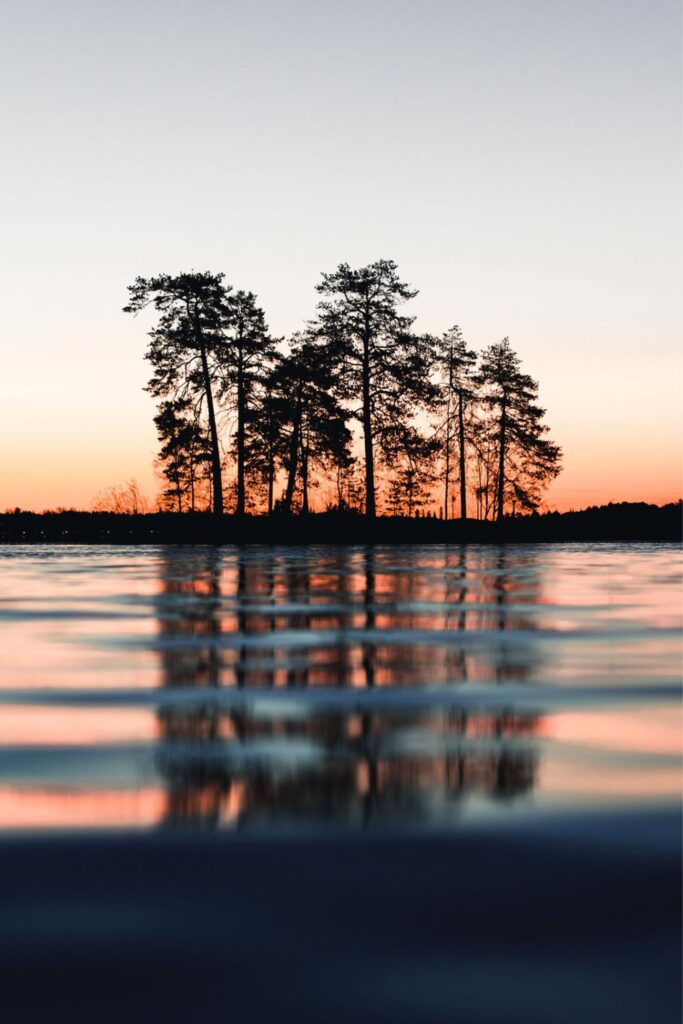
Finland’s Water Treatment Standards
Once considered by citizens to have “ugly water,” it wasn’t uncommon to find cancer-causing remnants in Finland’s water.
Environmental monitoring and wildlife restoration has since turned that status quo around.
Now described as an “essential part of Finland and the Finnish character”, environmental authorities ensure water quality is excellent, ecological, and cost-efficient.
The water is so clean that it barely needs added chemicals or processing.
However, because agricultural runoff is still a concern, it’s processed in UV-treatment pools for about 24 hours before it ends up in a home tap.
Finland’s tap water is often cleaner and better tasting than bottled water—although those (like us) that find the tremendous plastic waste associated with bottled water distasteful in its own right may not find this surprising.
Hence our insistence on plastic-free water bottles.
Where Finland Gets Its Water
As a country scattered with thousands (168,000 to be exact) of lakes, 85% of which have received good or excellent environmental evaluations, it’s no wonder Finland boasts some of the cleanest natural water in the world.
These lakes and their tributary rivers are where most of their water comes from, though Lake Päïjänne alone is responsible for the bulk.
2. ICELAND
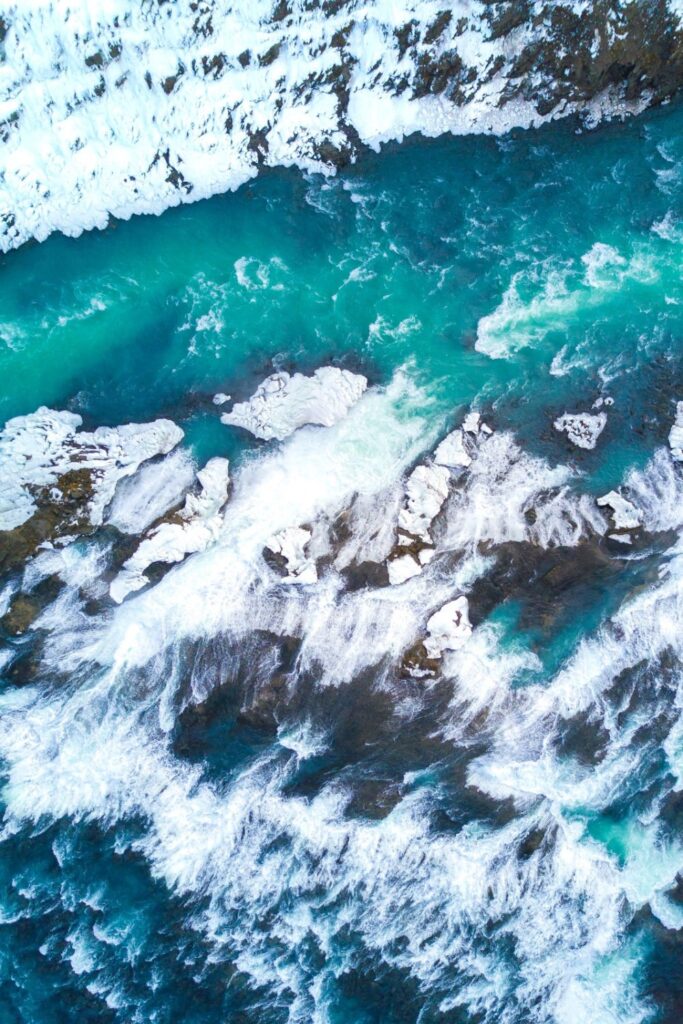
Iceland’s Water Treatment Standards
With “above exceptional” water, a staggering 97% of Icelandic residents are satisfied with their drinking water.
So pleased they are, that residents often encourage travelers and tourists to drink the glacial-cold, clear water straight from streams (just don’t do this near any of Iceland’s many sheep farms).
Samples are taken in Reykjavik every year to test for water quality.
With 99.44% of water compliance standards, it’s safe to say that Icelandic water is some of the best drinking water in the world.
Where Iceland Gets Its Water
While 6% of Iceland is covered by freshwater lakes, rivers, and glaciers, most of the country’s water comes from underground aquifers.
In fact, 95% of their tap water is sourced from fresh springs, meaning it’s free of nitrates, chlorine, and calcium and thus doesn’t need to be treated.
The remaining 5% is subjected to UV treatment, which is one of the comprehensive, most environmentally-friendly ways on how to purify water.
Hot water comes from geothermal origins, so it may have a slight sulphuric smell.
3. THE NETHERLANDS
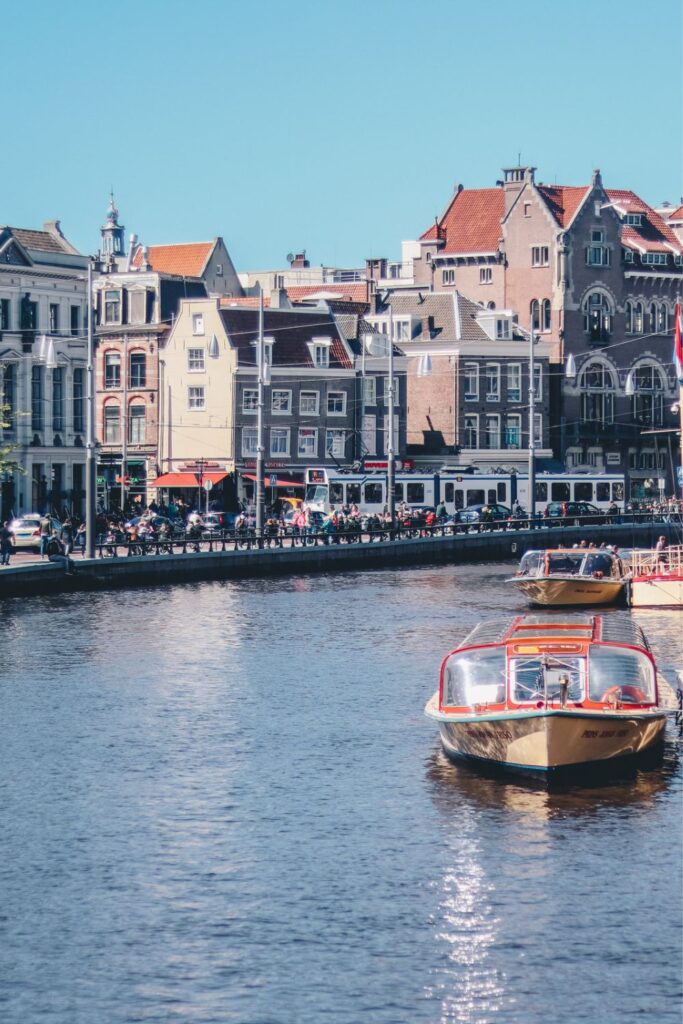
The Netherlands’ Water Treatment Standards
With drinking water systems far better than those in the United States and Great Britain, The Netherlands takes a different approach to drinking water.
Instead of the chlorine or fluoride used in countries like the US, the country transforms surface water into some of the best tap water in the world through a holistic approach.
In other words, they do so by protecting water sources (ensuring minimal filtration is needed at all), maintaining the piped distribution system, and utilizing good purification practices.
Water may go through sand filtration, ozone treatment, carbon treatment, filtration, and treatment with UV light before it comes out of the tap as non-chlorinated “super-water.”
Where The Netherlands Gets Its Water
Groundwater provides about two-thirds of the country’s water, while the other third comes from surface water, including that found in natural sand dunes.
Sand is actually one of the most effective water purification agents in its own right, a process called sedimentation.
4. NORWAY
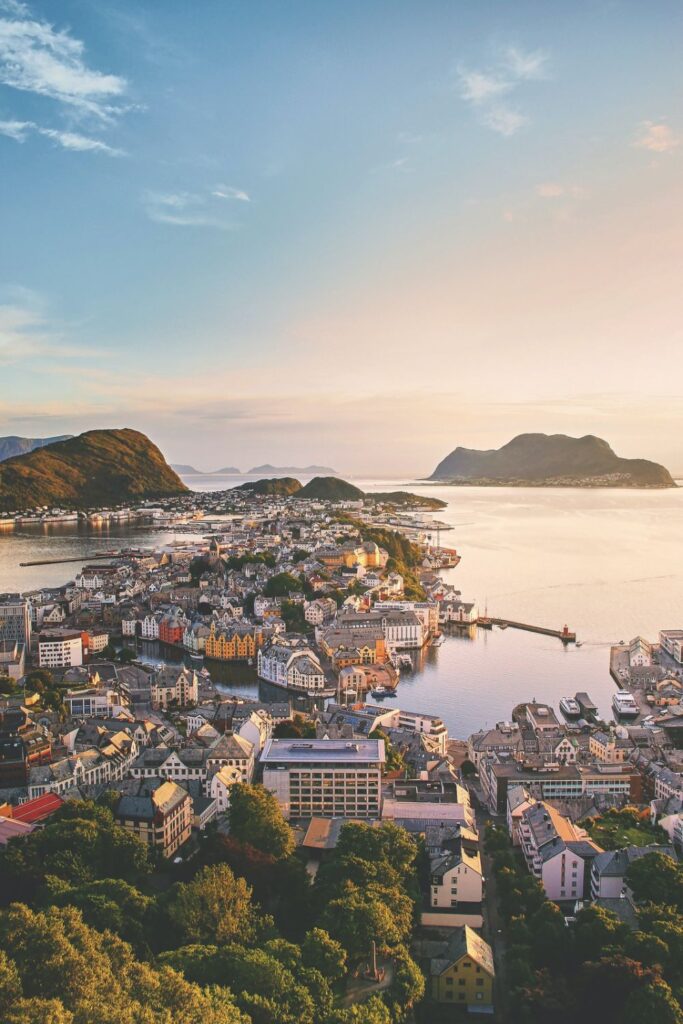
Norway’s Water Treatment Standards
According to Norse legend, if you consume water directly from a glacier, you might live to be 100.
While science and the discovery of parasitic glacier ice worms has now debunked this notion, it’s still hardly any wonder this pristine nordic country is home to arguably the cleanest tap water in the world.
Approximately 98.34% of Norwegians have access to clean water, and around 90% get water from more than 1,500 waterworks that are approved and strictly monitored by the government.
While low levels of heavy metals, pesticides, pollutants, and other unwanted substances are reported, it undergoes an intensive disinfection process.
Where Norway Gets Its Water
Scattering the country are 455,000 lakes and several rivers—so naturally, 90% of Norway’s water supply comes from ponds, lakes, streams, and brooks.
It easy to see how this is one of the greenest countries in the world.
The remaining 10% is sourced from surface water basins.
5. SWITZERLAND
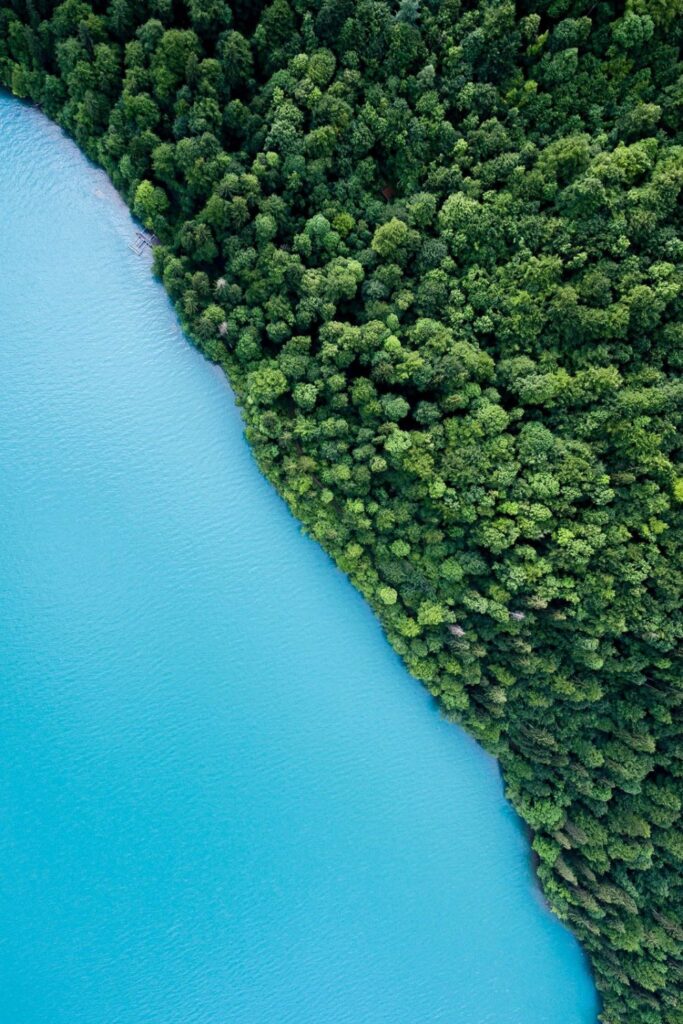
Switzerland’s Water Treatment Standards
Swiss water wasn’t always high quality H2O.
Over time, the country developed sophisticated purification and testing systems, and is now recognized by the UN as having some of the best tap water in the world for safety and hygiene.
The federal government minimally processes water.
Only 33% of the drinking water requires multi-level treatment: membrane technology, ozonation, carbon filtration, water softening, and decalcification.
Many rural communities developed their own water supply networks over a century ago and still manage them successfully today. Swiss law requires them to deliver “safe water in sufficient quantity”.
They also have measures in place to protect water sources and minimize pollution—like banning phosphates in laundry detergent—and supporting sustainable agriculture practices to reduce pesticides and fertilizers.
Where Switzerland Gets Its Water
Meeting high-quality standards, 80% of the water comes from underground sources, 40% from Alpine springs and the rest from lakes.
As a result of being sourced from underground protection zones or filtered through gravel and stone, 33% of the water doesn’t have to be treated at all.
Regardless of where it comes from, Swiss water drunk straight from the tap has a better ecological balance than bottled mineral water.
6. UNITED KINGDOM
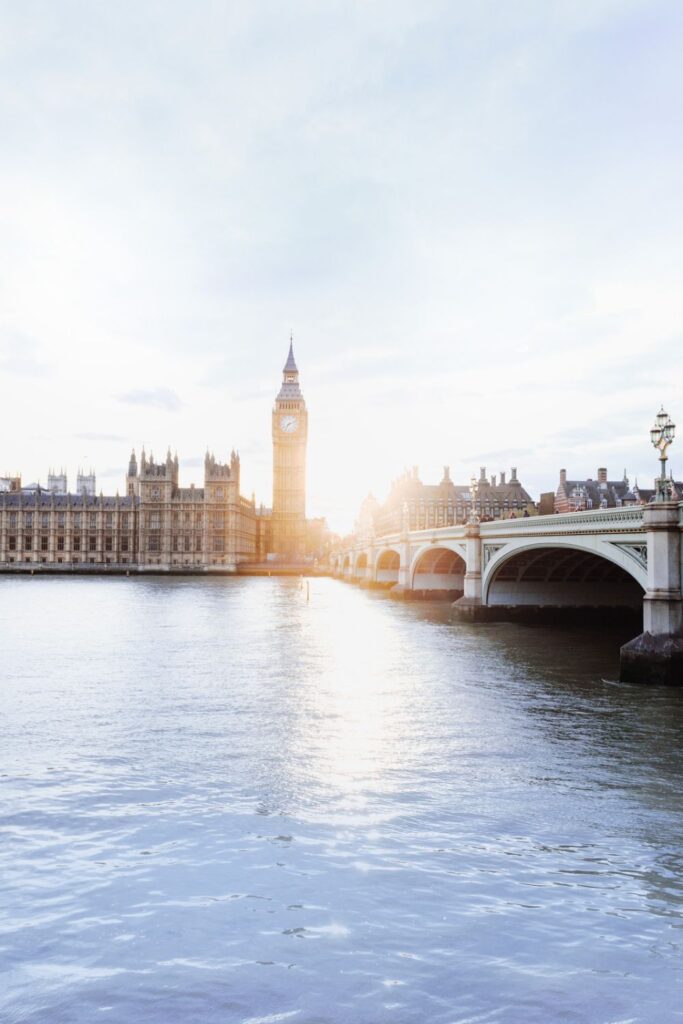
United Kingdom’s Water Treatment Standards
With water quality compliance rates as high as 99.1%, the UK is also vying for the cleanest tap water in the world.
Every year, using a decentralized system with independent inspectors, millions of tests are performed to ensure that water is of the best possible quality.
Like Switzerland, the UK has developed the infrastructure and advanced filtration processes (although it does utilize chlorine).
Where the United Kingdom Gets Its Water
The UK’s place on this list is impressive given The Thames was once London’s sole destination for waste throughout the Industrial Revolution. Sourcing water from what was then nicknamed the “Great Stink” led to the spread of Cholera and other diseases.
Today, the Thames still provides water for London but it’s made a remarkable recovery.
Roughly 80% of all UK water comes from the Thames and River Lee, with the remaining coming from thousands of groundwater reservoirs and hundreds of surface water bodies.
Considered one of the rainiest places on Earth, all the downpours regularly replenish the groundwater supply, which provides about one-third of the country’s drinking water.
7. MALTA
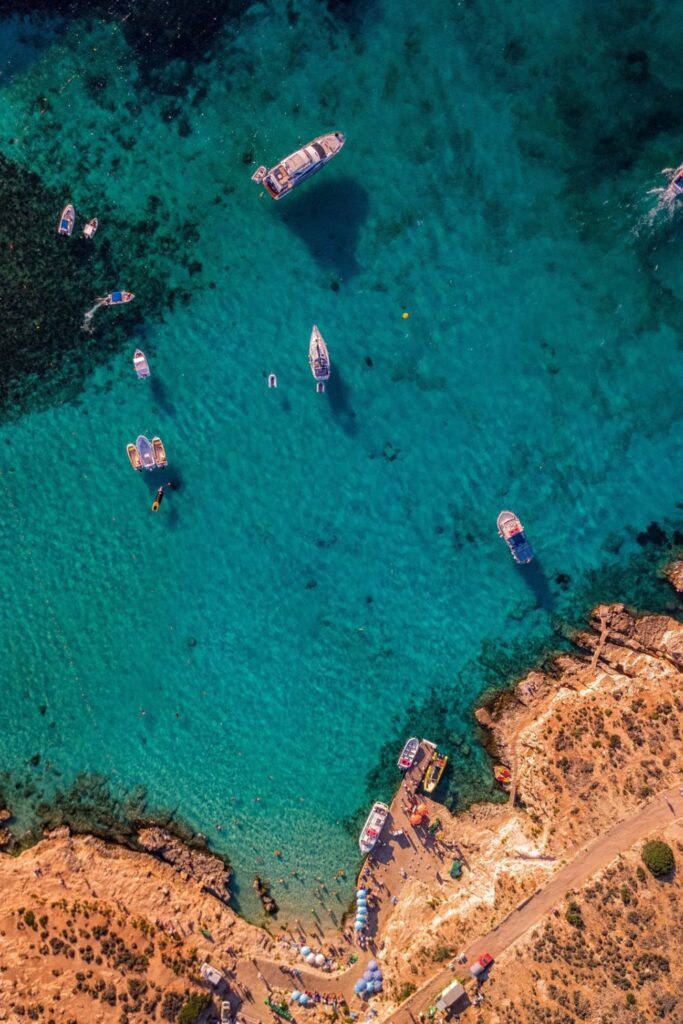
Malta’s Water Treatment Standards
With some of the cleanest natural water in the world, the Maltese have access to the EU’s fourth cleanest bathing water, enjoying excellent coastal and inland swimming sites.
So they have the cleanest water for relaxing and recreation, but what about rehydrating?
While it might not be held in as high esteem as its pristine swimming spots, Maltese tap water is safe to drink, treated minimally with chlorine, and tested on many levels to ensure that it’s of high quality, meeting all EU, WHO, and Maltese standards.
Where Malta Gets Its Water
With few lakes, rivers, and reservoirs, Malta relies little on groundwater aquifers for their water.
Most drinking water comes from what surrounds the small island country: seawater.
They’ve been using desalination and reverse osmosis to process seawater since the 1980s, you might detect a slight salty taste with each sip.
While this has worked, they are one of the most water-scarce countries in the world and recognize that, with a changing climate, it’s even more important to “ensure that nature’s needs for water are respected and met.”
8. GERMANY
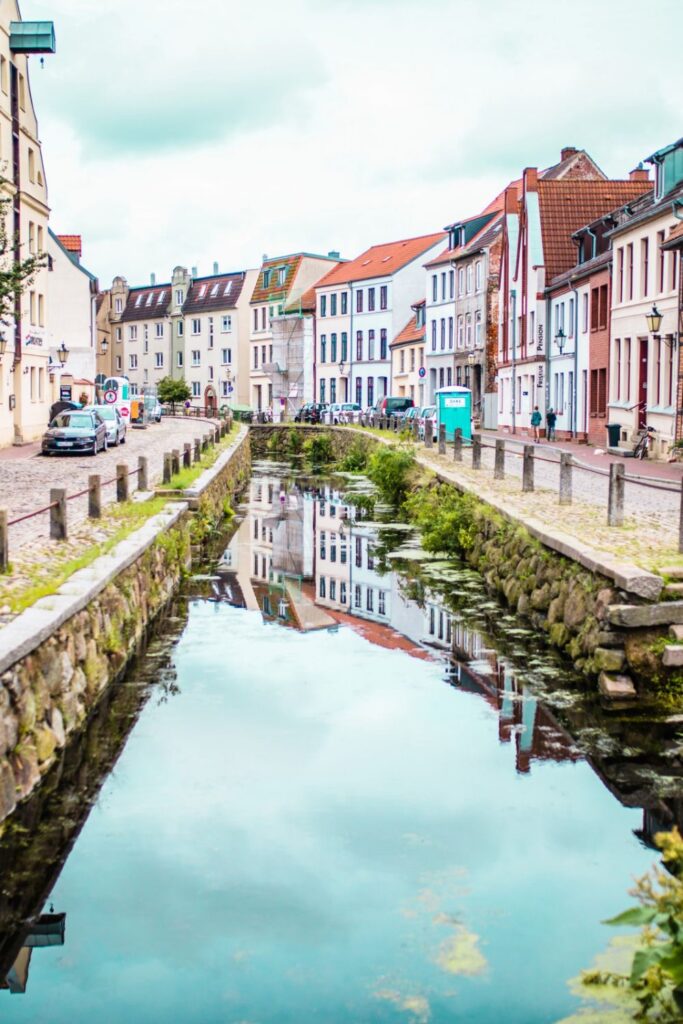
Germany’s Water Treatment Standards
Strictly regulated by the government, Germany has some of the best water in the world.
In fact, as one of the country’s most regulated resources, water standards adhere to a stringent water ordinance (called Trinkwasserverordnung).
Among other things, this means no hard chemicals like chlorine and fluoride are used to purify water.
All in all, more than 99.99% of monitored samples comply with the country’s strict requirements regarding chemical and microbiological quality.
Where Germany Gets Its Water
70% of the country’s tap water comes from spring water and groundwater. The rest is sourced from reservoirs, lakes, rivers, and wells near rivers and lakes.
It’s then analyzed and, if necessary, processed.
In most cases, the pure mineral water is consumed in its natural state.
9. LUXEMBOURG
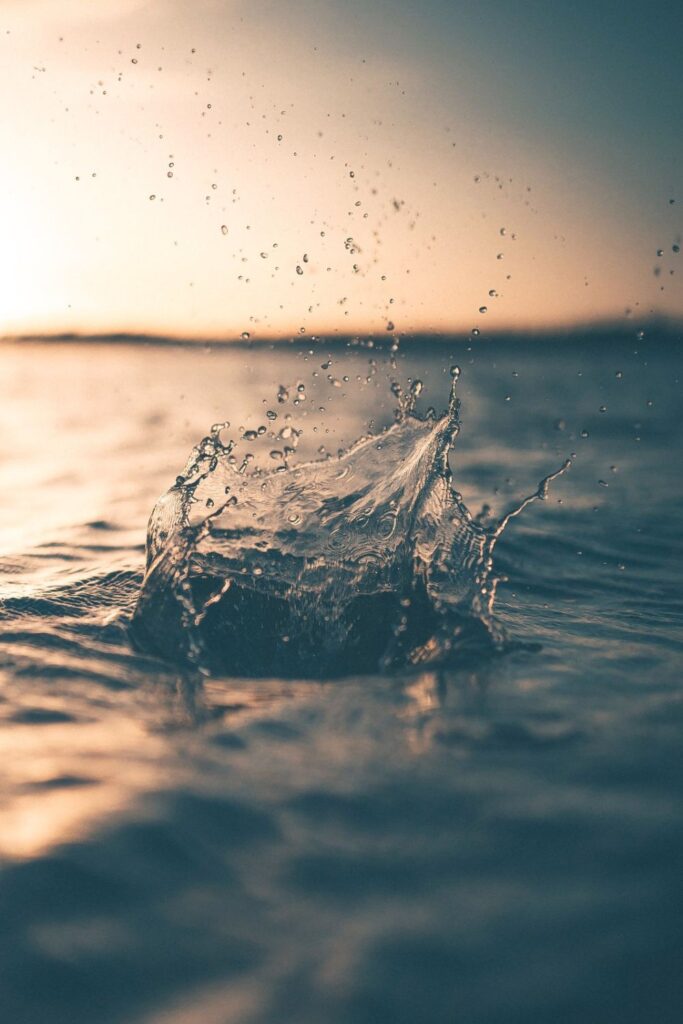
Luxembourg’s Water Treatment Standards
Like Germany, drinking water is the most strictly regulated and tested resource in Luxembourg.
Over 2,000 tests are conducted every year to ensure that microbiological quality, hardness, nitrates, pesticides, fluoride, and lead are within reasonable levels.
An ultrafiltration system is used to ensure cleanliness and purity of the tap water.
When it comes to the purity of the country’s 11 lakes, however, no systems or infrastructure are needed, as they’ve received “excellent” status from the European Environment Agency for being free from pollution and safe for humans and the environment.
So if you find yourself in one of the locales, take a few gulps out of the Grand Duchy.
Where Luxembourg Gets Its Water
57% of Luxembourg’s drinking water comes from groundwater. The Esch-sur-Sûre reservoir provides the remaining 43%.
10. SWEDEN
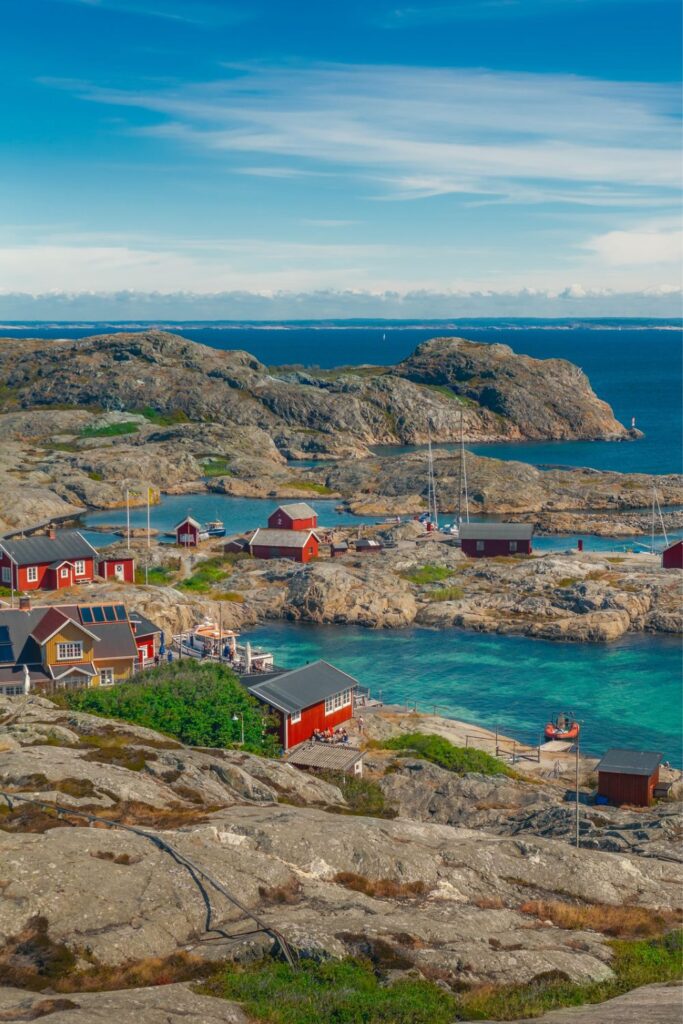
Sweden’s Water Treatment Standards
It’s the norm to drink tap water in Sweden, even though it passes through relatively minimal purification beforehand.
Swedish water purification happens in two stages: 1) Decontamination with mechanical and mild chemical methods; and 2) Organic pollutant extraction using slow sand filters.
Tap water is considered a better alternative that’s just as clean and fresh as bottled water—which is why they have programs in place to protect it.
In addition to environmental protection laws, frequent testing is administered to ensure drinking water safety.
Where Sweden Gets Its Water
About 50% of Sweden’s water comes from surface water (sourced from one of its 95,700 lakes), while the remaining half comes from groundwater.
11. AUSTRIA
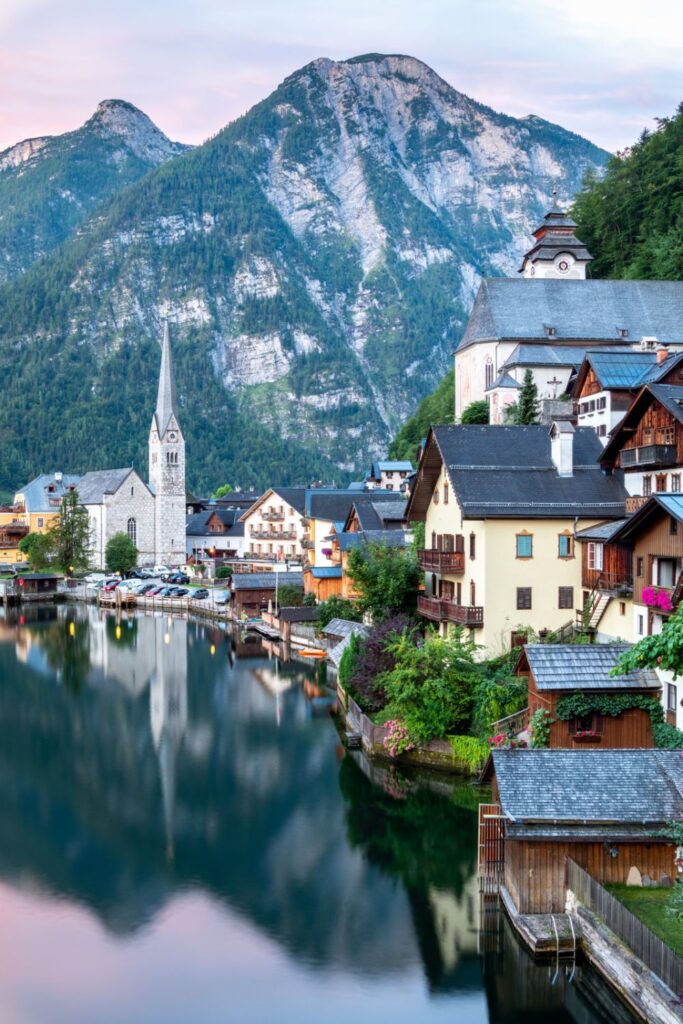
Austria’s Water Treatment Standards
Austrian law ÖNORM M 6222-1 has made high quality drinking water mandatory, and 90% of water supply facilities are directly controlled by the government.
They oversee the quality of the water to ensure that it is not contaminated, but supplied in its natural state.
Extensive protection measures applied to certain water basins ensures the water is clean enough to bypass treatment before it ends up in your glass.
Where Austria Gets Its Water
Just one-fifth of Austria’s land mass is suitable for industrial production and intensive agriculture. Most is covered by forests, rugged alpine peaks, alpine meadows, and crystal clear lakes and springs.
Again, no surprise that Austria is home to some of the cleanest natural water in the world.
Tap water is sourced from both groundwater and natural springs (about 50-50).
12. GREENLAND
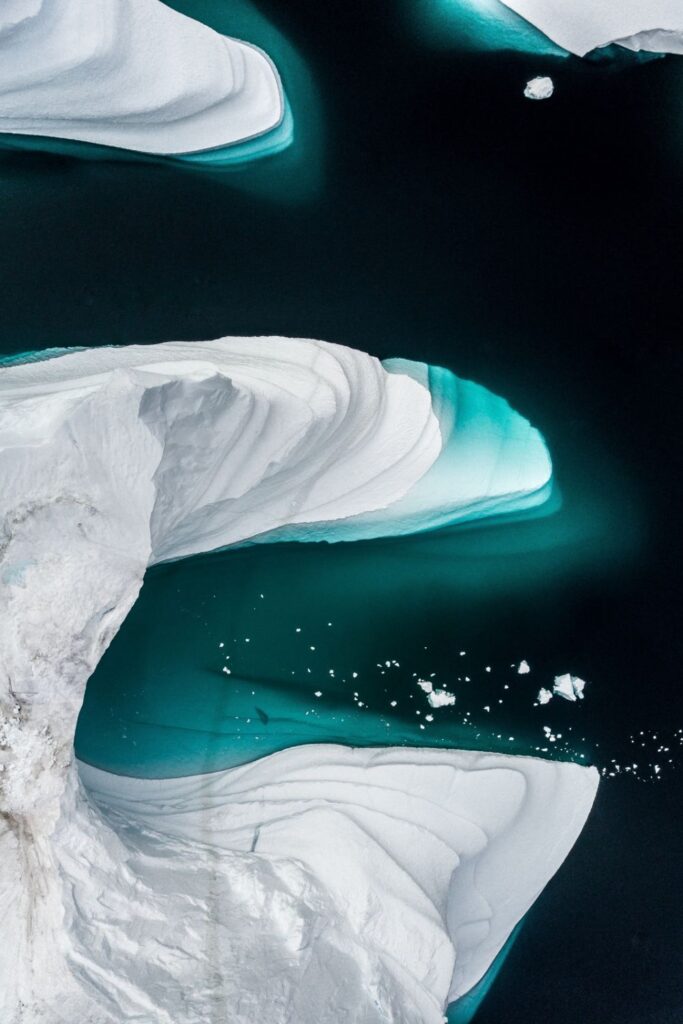
Greenland’s Water Treatment Standards
Renowned as some of the finest in the world, water from Greenland has actually been used as a baseline for zero pollution in other countries’ water tests.
All water is minimally treated and purified before it reaches its thirsty citizens. With such a naturally high quality, only a small proportion requires heavier processing at a reverse osmosis plant.
Where Greenland Gets Its Water
Most of Greenland’s water comes from surface water, either freshwater lakes or rivers.
Many activities are banned around the freshwater lakes (driving a snowmobile, walking a dog, etc.), to reduce the risk of pollution.
A small amount also comes from melting ice from glaciers.
13. DENMARK
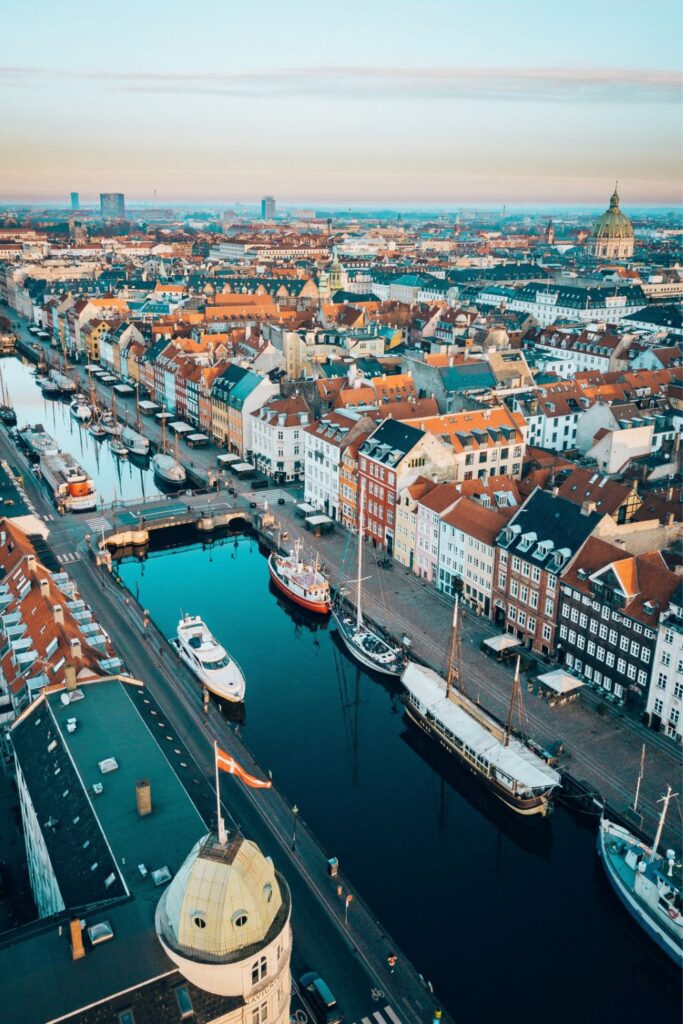
Denmark’s Water Treatment Standards
Considered to have some of the best tap water in the world, Denmark was one of the first countries to implement government oversight.
In 1971, the country established a ministry of the environment in its parliament. Now, they share knowledge about wastewater management with other countries.
This is because their holistic water policies are based on prevention instead of treatment.
Where Denmark Gets Its Water
Danish tap water (99% of it, anyway) can be extracted from groundwater reservoirs anywhere in the country.
It all produces clean, tasty drinking water straight from the tap—no chemical treatment involved.
BUT WHAT HAPPENS IF YOU DON’T HAVE ACCESS TO CLEAN WATER?
Unfortunately, many of these countries with the cleanest water in the world are under threat.
With a changing climate, increased threat of drought, biodiversity threats, and a rise in pollutants like agricultural chemicals, antibiotics, and microparticles, it’s safe to assume that even the cleanest water will get a little, uh…less clean in years to come.
Worse still is the fact that many around the world still don’t have access to safe drinking water, sanitation and hygiene, which can and often does lead to disease, illness, and death.
Roughly 829,000 people die every year because they lack access to clean water.
The good news is that methods to purify water for drinking are more accessible than ever. A range of water purification systems are available, for nearly any budget and any knowledge level.
Another option is to look for local spring water.
Often considered the cleanest water on Earth, there might actually be one closer than you think. Familiarize yourself with resources like Find a Spring.
FINAL THOUGHTS ON THE CLEANEST WATER IN THE WORLD
If you don’t live in one of these aqua havens, don’t stress.
If you can take a sip from the tap in your bathroom, you are still living the dream and arguably living in one of the greenest cities in the world.
So, let’s look after this resource, be grateful for the water that we do have access to and enjoy those hot showers that usually last way too long.
